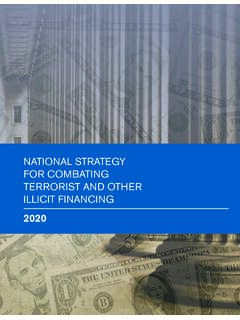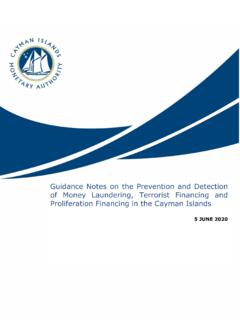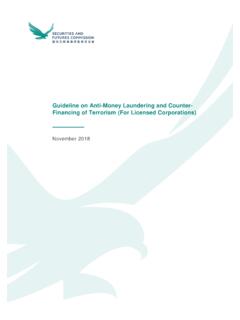Transcription of A draft framework for money laundering/terrorist financing ...
1 A draft framework FOR. money laundering /TERRORIST. financing . RISK ASSESSMENT OF A REMITTANCE. CORRIDOR. September 2021. Table of Contents Acronyms and Abbreviations .. 3. 5. Overarching Considerations for a Remittance Corridor Risk 8. Objective of a Remittance Corridor Risk Assessment (CRA).. 8. Defining the Scope of the Assessment .. 8. Domestic and International Cooperation ..10. Data Requirements and Sources ..11. National ML/TF Risk Assessment ..11. Assessing the Environment of the Two Countries and Relevant Contextual Factors ..13. Assessment of Threats in the Remittance money laundering Threat ..15. Terrorist financing Threat ..17. Assessment of Vulnerabilities in the Remittance Assessment of Consequences ..24. Conclusions ..28. ANNEX 1. Possible Data and Information Sources for a Corridor Risk 1. Disclaimer This work is a joint product of the staff of the International Monetary Fund (IMF) and the World Bank Group (WBG). The findings, interpretations, and conclusions expressed in this work belong to the authors of the report and do not necessarily reflect the views of the IMF or the WBG, their Boards of Executive Directors, and the governments they represent.
2 2. Acronyms and Abbreviations AML/CFT Anti- money laundering / combating the financing of terrorism BBs Building Blocks BSA Banking Secrecy Act CBR Correspondent Banking Relationship CDD Customer Due Diligence CPMI Committee on Payments and Market Infrastructures CRA Corridor Risk Assessment E-KYC Electronic Know Your Customer EMDE Emerging Market and Developing Economy FATF Financial Action Task Force FIU Financial Intelligence Unit FSB Financial Stability Board FSRB FATF-Style Regional Body ID Identification KYC Know Your Customer ML/TF money laundering /Terrorist financing MSB money Service Business MTO money Transfer Operator MVTS money or Value Transfer Service NGO Non-Governmental Organization NPO Non-Profit Organization NRA National Risk Assessment PEP Politically Exposed Person POC Proceeds of Crime RBA Risk-Based Approach to AML/CFT. RSP Remittance Service Provider 3. SRC Safe Remittance Corridor STR Suspicious Transaction Report TTR Transaction Threshold Report 4.
3 Introduction Remittances are the financial lifeblood not only for the families of migrant workers but also for the economies of many emerging markets and developing economies (EMDEs). Remittances, however, may pose money laundering and terrorist financing (ML/TF) risks, depending on the context of the sender and/or recipient countries as well as the scale and the characteristics of criminal activities and terrorism in these transactions. If these risks are not well understood and mitigated effectively, a remittance corridor could be abused by criminals, organized crime groups, terrorists, and terrorist organizations, potentially undermining national security, social order, and economic stability on both sides of the corridor. Though remittances may pose ML/TF risks, all remittance corridors and all the transaction categories in a remittance corridor should not be treated as inherently higher risk and lower 1 risk situations can be identified. A key factor in having efficient and well- calibrated regulatory frameworks in the remittance corridor countries is the implementation of risk-based anti- money laundering / combating the financing of terrorism (AML/CFT) measures, in line with the Financial Action Task Force (FATF) standards.
4 This will enable prioritization of AML/CFT measures and calibration of regulatory frameworks to reduce the costs of compliance and risk-mitigating measures for lower-risk transactions. To support sustainable development and poverty reduction, it is crucial not to impose on the remittance sector more stringent measures than are warranted to mitigate ML/TF risks. Effective ML/TF risk assessments are a critical underpinning for having a risk-based regulatory framework for a remittance corridor. ML/TF risks in a corridor can be identified, analyzed, and assessed by the authorities, including the ML/TF threats and vulnerabilities in the corridor, the likelihood of risk events in the corridor, and their possible consequences. The risk assessment would then be the basis for adjusting the regulatory framework and the supervision of the remittance sector on a risk basis. Correspondent Banking Relationship Pressures on Remittances In recent years, global correspondent banks have been terminating or restricting business relationships with certain client categories.
5 Some key drivers behind this decline in correspondent banking relationships are changes in banks' operational and financial risk appetites (risk and return considerations) due to changes in the regulatory and enforcement landscape, increased supervisory pressure and sanctions for non-compliance with AML/CFT. regulations, bilateral economic and trade sanctions, rising AML/CFT compliance costs, 1. Low risk and lower risk have specific meanings in FATF Recommendations. While low risk refers to absolute and proven low risk which can be the basis for exemptions (see Interpretive Note for Recommendation 1 of the FATF Recommendations) in limited circumstances, lower risk implies relativity and can be the basis for simplification but not exemptions. The Financial Stability Board (FSB) Roadmap refers to low risk in a more generic way. Considering that the focus of this project is not on the exemptions from the application of certain anti- money laundering / combating the financing of terrorism requirements contemplated by FATF, the authors followed the FATF terminology and used lower risk throughout the report.
6 5. increased demands for tax transparency, and unclear regulatory expectations and difficulties in managing and mitigating cross-border ML/TF risks associated with correspondent banking relationships (CBRs). In some cases, local/national banks have assessed that the level of risks posed by their clients is acceptable but still decided to terminate some business relationships due to their correspondent banks' risk appetite. Withdrawal of CBRs has affected the remittance service providers (RSPs) and created new challenges in the provision of remittance services in some countries. In some countries and regions, smaller remittance players have been forced to close, to become agents of larger businesses, or to continue remittance transactions through unregulated channels or alternative arrangements such as nested correspondent relationships and cash couriers. G20 Roadmap for Enhancing Cross-Border Payments The G20 has made enhancing cross-border payments a priority in order to achieve faster, cheaper, more transparent, and more inclusive cross-border payment services, while maintaining their safety and security, thereby facilitating economic growth, international trade, global development, and financial inclusion.
7 At its October 2020 Finance Ministers and Central Bank Governors meeting, the G20 endorsed the Roadmap for Enhancing Cross-Border Payments, which comprises 19 building blocks (BBs). The IMF and the World Bank were assigned to cover BB7 on safe payment corridors, which involves the development of a framework for remittance corridors' risk assessments. BB7 is part of focus area B within the G20. cross-border payments roadmap. Focus area B is aimed at coordinating and streamlining regulatory, supervisory, and oversight frameworks across jurisdictions and at fostering efficiencies in customer due diligence processes by facilitating cross-border data flows and fostering usage of digital identification (ID) and shared customer due diligence infrastructures. BB7 on Safe Payment Corridors has two phases: The first phase is about the development of a framework and methodology for the assessment of the ML/TF risks in remittance corridors and the identification of potential lower risk corridors, as part of or consistent with a country's national ML/TF risk assessment (NRA).
8 In the second phase, the proposed framework is expected to be piloted in some corridors with a view to testing and further refining the assessment To reflect the scope more accurately, this report uses the term safe remittance corridor (SRC) 3 rather than safe payment corridor.. The Objective of this Report This report proposes a draft framework and methodology for the ML/TF risk assessment in remittance corridors having the potential of being identified as SRCs. The content of this 2. Financial Stability Board, Enhancing Cross-border Payments; Stage 3 Roadmap, October 13, 2020, pp. 20, 3. The term Safe Remittance Corridor does not imply an absence of ML/TF risks in the corridor, but rather a lower risk level. 6. report is the deliverable of the first phase of BB7 and is expected to facilitate ML/TF pilot risk assessments in one or more remittance corridors to be determined in the next phase of the project. The final version of the framework will incorporate findings and insights from the pilot risk assessments and stakeholder consultations.
9 This report proposes an assessment framework that can be applied jointly or separately by the sender and the recipient corridor countries. Some Key Concepts in the Report In the context of this report, international remittances refer to cross-border person-to- person and non-commercial payments of relatively low value. Due to the wide variety of cross-border transactions it is difficult to have precise boundaries and a definition of remittance transactions. The main sources that attempt to define the scope of international remittances are the International Monetary Fund's (IMF) Balance of Payments Manual and the Committee on Payments and Market Infrastructures' (CPMI) General Principles for International Remittance Services. For simplicity, this report mainly adopts the definition by the CPMI. The qualifier non-commercial has also been added to this definition to make clear that commercial transactions are out of the scope of this project. Throughout this report, remittances refers to international remittances and remittance corridor to the formal international remittance channels between a sender and a recipient country.
10 In some sections, the report refers to cross- border payments when it is needed to cover non-remittance transactions in the discussion. The sender country is sometimes referred to as the home country that conducts the assessment. A. third country means any other country than the sender and the recipient country. 7. Overarching Considerations for a Remittance Corridor Risk Assessment Objective of a Remittance Corridor Risk Assessment (CRA). In the context of BB7, the objective of a CRA is assessing and understanding the ML/TF. risks of remittances in a corridor, with the aim of simplifying AML/CFT measures in lower risk remittance transactions. If the CRA assesses that the overall ML/TF risk level in the corridor is lower, the corridor can be treated as an SRC 4 and subject to simplified customer due diligence (CDD) measures by regulatory authorities, which can be implemented by the private sector. This process is mainly about the assessment and identification of lower risks as the basis for CDD simplifications on a policy and regulatory level, and communication of the assessment results to the private sector to assist with their own customer risk assessment.
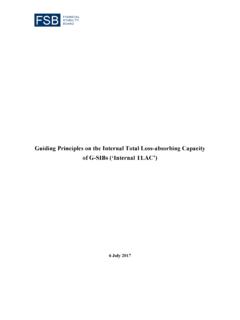
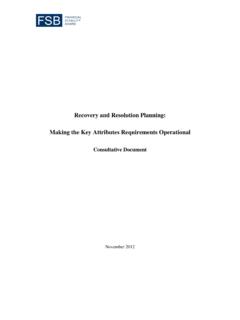
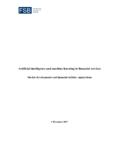
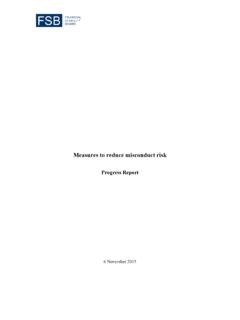
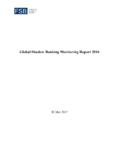
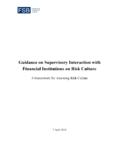
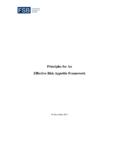
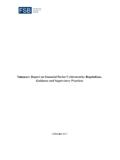
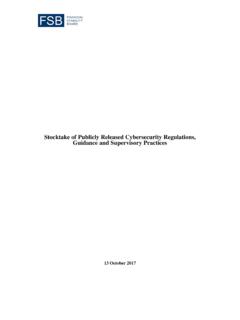
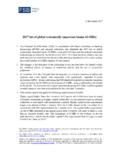
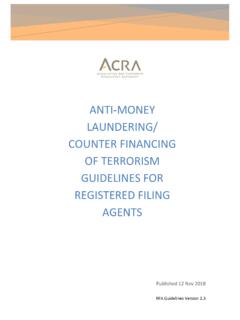
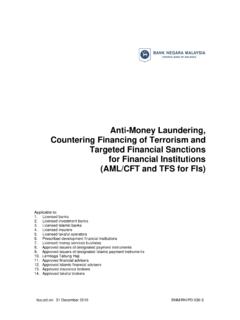
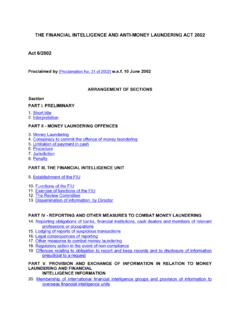
![Law No. [20] of 2019 on Combatting Money Laundering and ...](/cache/preview/5/8/4/5/3/c/f/8/thumb-58453cf868e999c01de3662d12048878.jpg)
